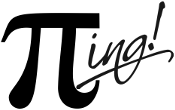 |
PING
0.9
Statistical data handling and processing in production environment
|
 |
PING
0.9
Statistical data handling and processing in production environment
|
Divide a given sample, possibly weighted, into a certain number of slices of equal size, with units ranked according to a variable of interest.
Contents:
Algorithm
Nine quantile algorithms are made available, as discussed in Hyndman and Fan's, plus two additional coming also from the literature, namely Filliben’s and Cunnane's publication (see references):
type | description |
|---|---|
| 1 | inverted empirical CDF |
| 2 | inverted empirical CDF with averaging at discontinuities |
| 3 | observation numberer closest to qN (piecewise linear function) |
| 4 | linear interpolation of the empirical CDF |
| 5 | Hazen's model (piecewise linear function) |
| 6 | Weibull quantile |
| 7 | interpolation points divide sample range into n-1 intervals |
| 8 | unbiased median (regardless of the distribution) |
| 9 | approximate unbiased estimate for a normal distribution |
| 10 | Cunnane's definition (approximately unbiased) |
| 11 | Filliben’s estimate |
All sample quantiles are defined as weighted averages of consecutive order statistics. Sample quantiles of type i are defined for 1 <= i <= 10 by:
Q[i](p) = (1 - gamma) * x[j] + gamma * x[j+1]
where x[j], for (j-m)/N<=p<(j-m+1)/N, is the j-th order statistic, N is the sample size, the value of gamma is a function of:
j = floor(N*p + m) g = N*p + m - j
and m is a constant determined by the sample quantile type.
For types 1, 2 and 3, Q[i](p) is a discontinuous function:
type | p[k] | m | alphap | betap | gamma |
|---|---|---|---|---|---|
| 1 | k/N | 0 | 0 | 1 | 1 if g>0, 0 if g=0 |
| 2 | k/N | 0 | 0 | 1 | 1/2 if g>0, 0 if g=0 |
| 3 | (k+1/2)/N | -.5 | -.5 | -1.5 | 0 if g=0 and j even, 1 otherwise |
For types 4 through 11, Q[i](p) is a continuous function of p, with gamma and m given below. The sample quantiles can be obtained equivalently by linear interpolation between the points (p[k],x[k]) where x[k] is the k-th order statistic:
type | p[k] | m | alphap | betap | gamma |
|---|---|---|---|---|---|
| 4 | k/N | 0 | 0 | 1 | g |
| 5 | (k-1/2)/N | .5 | .5 | .5 | g |
| 6 | k/(N+1) | p | 0 | 0 | g |
| 7 | (k-1)/(N-1) | 1-p | 1 | 1 | g |
| 8 | (k-1/3)/(N+1/3) | (1+p)3 | 1/3 | 1/3 | g |
| 9 | (k-3/8)/(N+1/4) | (2*p+3)/8 | 3/8 | 3/8 | g |
| 10 | (k-.4)/(N+.2) | .2*p+.4 | .4 | .4 | g |
| 11 | (k-.3175)/(N+.365) | .365*p+.3175 | .3175 | .3175 | g |
In the above tables, the (alphap,betap) pair is defined such that:
p[k] = (k - alphap)/(N + 1 - alphap - betap)